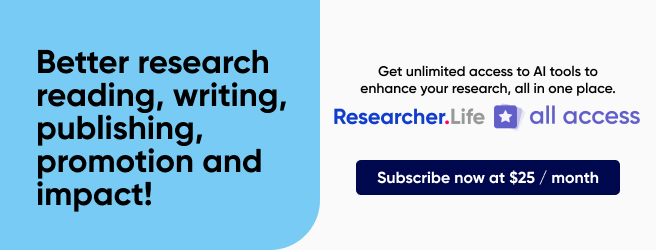Patents 101: What are patents and how do you acquire them?

- To get a patent, you need to have your idea or device evaluated, a claim of originality, and filing of an application for patent.
- There are provisional application for patent (also known as a provisional patent application, or PPA), incomplete application for patent, and The International Application filed under the Patent Cooperation Treaty (PCT).
- Filing provisional patent application usually is the best way of protecting a device or process.
- Two phases are generally required for all patents: evaluation and writing
- Writing a patent application requires a subject matter expert, excellent technical writing skills, and preferably (but not required) an attorney or patent agent.
Have you struggled to understand whether you should apply for a patent and what it entails? This article explains the basics to help you expand your knowledge about patents.
An ethical decision
Would you refuse critically needed health care to someone unless paid a handsome profit? What about making a genetically-modified plant if its availability prevented the starvation of millions? How about any device facilitating mobility and communication? Usually, corporations deny inventions to those needing them because of the inability to pay the inflated costs, but individual researchers are not exempt. Before seeking intellectual property protection, you should assess the effects. And take for instance the actual case is of a critical hepatitis C drug sofosbuvir wherein an appeal was lodged against the decision to grant the patent .
Philosophers refer to "ethos" or core values. What is most important to you? No doubt your efforts should be recognized and rewarded if for no other reason than to encourage others to work for humankind's benefit. Hence, to be a part of that community with a "high road ethos" (Horne, 2019), think of your patent as a well-deserved recognition of your efforts and telling the world, "I have come here to share my idea to help you." You should reflect on the implications of your discovery, and this requires introspection and value clarification.
This article outlines the intellectual process of acquiring a patent as a way of achieving a just reward, and not a way of holding captive (as in a ransom) critical discoveries for your private benefit, i.e., acquiring a just reward in a socially conscious manner. We’ll learn the basics of intellectual property protection, what a patent means, the eligibility for applying for a patent, and follow-up.
Likelihood of success
- Ninety-percent or more patents fail to obtain any monetary returns, one claim being 97%.
- An idea's success is assessed by "market analysis," something best left to experts. Identifying a critical need or making a breakthrough in solving a problem for vast numbers of persons are good indicators.
Proceed if you are OK with this. As a researcher, your obtaining a certificate of novelty usually enhances your career track and secures peer recognition, but hopefully and mainly shows you to be a member of society contributing to its wellbeing. Again, identify your core values.
Now, examine your circumstances allowing or not allowing you to file for a patent. Check with your organization or employer to see if you can obtain for yourself a patent based on the research done in your environment. Many organizations, including governments, educational institutions, and businesses, will claim ownership rights deriving from on-the-job research. It is common to sign any rights over to them if research and development are done on the job or are job-related. Check your non-disclosure/non-compete agreement, for example. If such applies to you, learning the details about applying for a patent becomes moot. Review all the agreements you signed when you joined the organization.
Basic forms of IP protection
The three basic forms of protection are copyrights, trade secrets, and patents.
1. Copyright
Copyright applies to authors, musicians, poets, painters, etc. While there is no "global copyright," applying for it in any country is recognized worldwide by the Berne Convention for the Protection of Literary and Artistic Works.
2. Trade secrets
Trade secrets are ideas, processes, methods, information, etc. that are known only to a select few persons beholden to the entity (organization of individuals) who would benefit or, if known, would allow others economic advantage. These could include recipes (such as for a soft drink or food preparation), manufacturing processes or techniques, or organizational/individual secrets making a public presentation possible. Wikipedia has a very well-sourced article on the subject.
3. Patents
The World Intellectual Property Organization (WIPO), a United Nations Organization was established "to encourage creative activity, to promote the protection of intellectual property throughout the world" (WIPO PCT, 2019). Under its auspices is the Patent Convention Treaty (PCT), an internationally recognized agreement making the patent application process uniform worldwide. As per WIPO, this is the meaning of a patent:
A patent is an exclusive right granted for an invention, which is a product or a process that provides, in general, a new way of doing something, or offers a new technical solution to a problem. [...] To get a patent, technical information about the invention must be disclosed to the public in a patent application.
All countries who are signatories of the PCT have a definition of "patent" consistent with this one. For example, the United States Patent and Trademark Office (USPTO) says a patent is: “the right to exclude others from making, using, offering for sale, or selling the invention throughout the United States or importing the invention into the United States” (USPTO Patent Information, 2015). Australia says, "A patent is a legally enforceable right for a device, substance, method or process. For your application to be successful, your invention must be new, useful and inventive or innovative" (Australia IP, 2019). Canada states, "To be eligible for patent protection, your invention must be:
- new—first in the world
- useful—functional and operative
- inventive—showing ingenuity and not obvious to someone of average skill who works in the field of your invention”
In India you have to be "any person claiming to be the true and first inventor of the invention," implying patent examiners searching existing patents and other documents to ascertain a claimant's originality.
Read the 51-page PCT for an in-depth comprehension of the scope, purpose, and implementation of patent protection worldwide. Each country may have variants, but they all have to be consistent with the PCT.
Finally, a patent does not obligate you to do anything. However, there are many downsides to a patent, such as it being used to block or bury innovation, high cost of defense and maintenance, stifling collaboration on life-saving ideas, need to file in every country, premature publication of ideas, keeping costs artificially high, etc. (Miller, 2019; Boldrin and Levine, 2012). Again, reflect on your values to assess if you want to deny a particular benefit to others.
Types of patents
The PCT states that protection for a patent is offered through "inventors’ certificates, utility certificates, utility models, patents or certificates of addition, inventors’ certificates of addition, or utility certificates of addition", but refines the list to patents and "or one of the other kinds of protection" in this list.
Common patents include:
- Utility patents – These may be granted to anyone who invents or discovers any new and useful process, machine, article of manufacture, or composition of matter, or any new and useful improvement thereof;
- Design patents – These may be granted to anyone who invents a new, original, and ornamental design for an article of manufacture; and
- Plant patents – These may be granted to anyone who invents or discovers and asexually reproduces any distinct and new variety of plant. (USPTO, loc. cit.).
Other countries have different types of patents, such as Australia's standard and innovation patents. China refers to patents as "inventions, utility models and designs."
Under Article 1225 of the Russian Civil Code, a broader list called "Results of Intellectual Activity" includes all the categories of IP discussed above, under "[...] legal entities, goods, work, services, and enterprises", with patents grouped as "inventions; utility models; industrial designs", but further categories including software, databases, "topographies of integrated circuits; secrets of production (know-how)." Plant patents often follow the utility patent application process but involve very detailed descriptions and documentation. Design patent application requires searching for existing designs and a single uploading of application documents. So let us look further into the utility patents.
The provisional application of patent
The three ways of applying for a patent are:
- A document granting those special rights as outlined in the PCT
- Provisional Application for a Patent (also called informally "Provisional Patent Application" or "PPA")
- Non-provisional application for patent ("regular" patent application)
We will focus on the first two more commonly-taken routes, as the "regular" application is used after the idea/device is stabilized and there is good reason to think it will be marketable. Besides, it is very costly. The PPA is the simplest method, so we will discuss it first.
Let’s not get confused. There is no such thing as a ‘provisional’ patent. There is only the patent – the actual document – and the patent application process. The PPA is an initial step to laying claim on your originating what is to be determined by patent examiners as a novel idea.
The PPA is a "placeholder", which refers to your securing a date (priority date) on which you claim originality. If you and another person apply for a utility patent (either a non-provisional patent application or PPA) and you file first, your PPA will get you first in line for the patent. It is a race against time! Additionally, keep these points in mind:
- PPAs are not opened and examined.
- A PPA grants you "patent pending" status while you are "testing your idea" to see if it is workable and salable.
- PPAs are less formal and far less costly, so they do not require an attorney to prepare them.
- Often, researchers will file successive PPAs, each corresponding to a development step, filing a non-provisional patent application only on the fully developed research.
- There is no design PPA.
Only a handful of countries, such as the US and Australia accept these applications. Some countries, like Canada, do not have an application called "provisional patent application", but offer incomplete applications as substitutes. That is, providing only partial information (description and drawings) is sufficient to establish a priority filing date. Only after completing the application, such as providing claims and abstract, it goes to the patent examiner. In these cases of incomplete applications, the filing fee is charged for the non-provisional patent application, there being no lower fee for the incomplete application acting as a PPA. A more comprehensive approach is filing an international application (PCT application) through WIPO, one that serves as an enhanced PPA but with the same purpose.
In essence, the PPA and the PCT application do the same thing but in different ways. While the fees are higher through WIPO, you do receive a comprehensive search report and have 18 months (as opposed to the 12 months for a PPA) to decide on filing patent applications in various countries (PCT, 2019).
Again, double-check to see if your organization will allow you to file a patent application for something you developed while on the job or is job-related (NDA-NCA, etc.).
We have focused on PPA, as the non-provisional patent application is filed when a researcher has finalized development and is definitely serious about devoting resources. Now is the time to call on attorneys who will be vital in the application process. In the next part of this article, we will take a closer look at how to file a provisional patent.
CAVEAT: Please note that the information in this article should not be taken as legal advice. Researchers should consult a patent agent or attorney when planning to apply for a patent.
Comments
You're looking to give wings to your academic career and publication journey. We like that!
Why don't we give you complete access! Create a free account and get unlimited access to all resources & a vibrant researcher community.

Subscribe to Journal Submission & Peer Review













